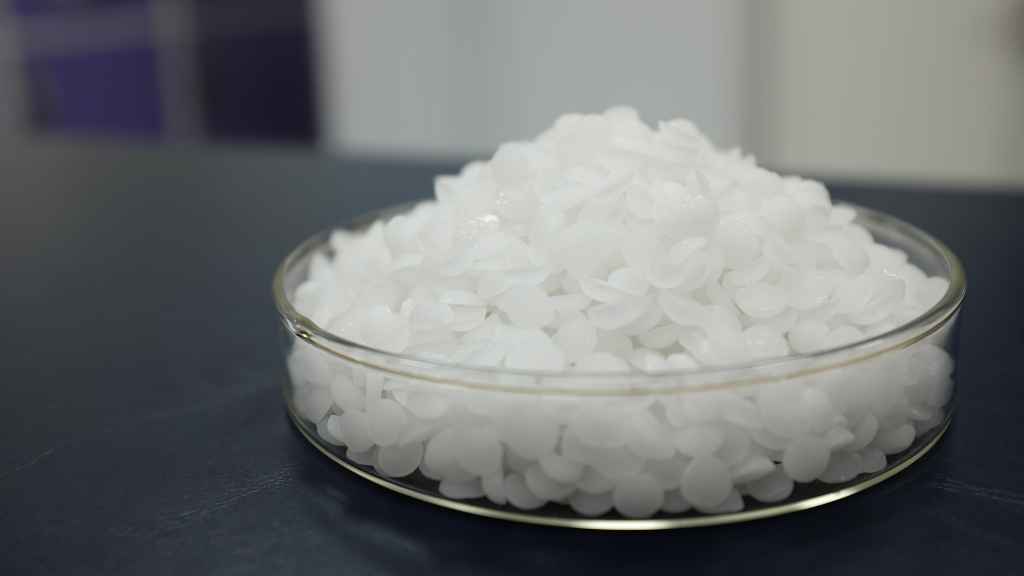Blog
How Do You Calculate the Weight of NaOH?
How do you calculate the weight of NaOH? Sodium hydroxide, also known as NaOH, is a common chemical used in various industries and labs. To accurately measure its weight, you need to understand its molecular formula and use basic calculations. In this article, we’ll explain the steps to calculate the weight of NaOH, including the essential formula and methods for both lab and industrial applications. This guide will make the process simple and easy to follow.
Understanding Its Key Applications
1. Understanding the Molecular Weight of NaOH
Before calculating the weight, it’s important to know the molecular weight of NaOH. This will be the basis of any weight calculation.
Molecular Formula of NaOH:
Sodium hydroxide consists of three elements: sodium (Na), oxygen (O), and hydrogen (H). To calculate its molecular weight, you add the atomic masses of each element. The atomic weights are:
- Sodium (Na): 22.99 g/mol
- Oxygen (O): 16.00 g/mol
- Hydrogen (H): 1.01 g/mol
Molecular Weight of NaOH:
To get the molecular weight of NaOH, simply add these numbers:Molecular weight of NaOH=22.99+16.00+1.01=40.00 g/mol\text{Molecular weight of NaOH} = 22.99 + 16.00 + 1.01 = 40.00 \, g/molMolecular weight of NaOH=22.99+16.00+1.01=40.00g/mol
So, the molecular weight of NaOH is 40.00 g/mol.
2. Formula to Calculate the Weight of NaOH
Once you know the molecular weight, you can use a simple formula to calculate the actual weight you need.
Basic Formula:
The formula to calculate the weight of NaOH is:Weight of NaOH (g)=Molarity (mol/L)×Volume (L)×Molecular Weight (g/mol)\text{Weight of NaOH (g)} = \text{Molarity (mol/L)} \times \text{Volume (L)} \times \text{Molecular Weight (g/mol)}Weight of NaOH (g)=Molarity (mol/L)×Volume (L)×Molecular Weight (g/mol)
In this formula:
- Molarity is the concentration of the solution, typically in moles per liter (mol/L).
- Volume is the amount of solution you need, measured in liters (L).
- Molecular Weight is the value we calculated earlier, which is 40.00 g/mol for NaOH.
3. Step-by-Step Guide to Calculate NaOH Weight
Here’s a simple process to follow when calculating the weight of NaOH for any experiment or industrial use.
Step 1: Determine Molarity and Volume
The first step is to identify the molarity (M) of your NaOH solution. This is usually given in moles per liter. Next, decide the volume (V) of solution you need in liters. For example, you may need a 0.5 M NaOH solution with a volume of 2 liters.
Step 2: Use the Formula
Once you have the molarity and volume, plug them into the formula along with the molecular weight:Weight of NaOH (g)=0.5 mol/L×2 L×40.00 g/mol\text{Weight of NaOH (g)} = 0.5 \, \text{mol/L} \times 2 \, \text{L} \times 40.00 \, \text{g/mol}Weight of NaOH (g)=0.5mol/L×2L×40.00g/mol
Step 3: Calculate the Weight
Now, perform the calculation:Weight of NaOH (g)=0.5×2×40=40 g\text{Weight of NaOH (g)} = 0.5 \times 2 \times 40 = 40 \, \text{g}Weight of NaOH (g)=0.5×2×40=40g
In this example, you would need 40 grams of NaOH to prepare 2 liters of a 0.5 M solution.
4. Adjusting for Different Concentrations
If you need a different concentration of NaOH, you can easily adjust the molarity in the formula to suit your needs. Here’s how you can calculate it for varying concentrations.
Example for 1M Solution:
If you need a 1 M NaOH solution with a volume of 1 liter, the calculation would look like this:Weight of NaOH (g)=1 mol/L×1 L×40.00 g/mol\text{Weight of NaOH (g)} = 1 \, \text{mol/L} \times 1 \, \text{L} \times 40.00 \, \text{g/mol}Weight of NaOH (g)=1mol/L×1L×40.00g/mol
This gives you a weight of:Weight of NaOH (g)=1×1×40=40 g\text{Weight of NaOH (g)} = 1 \times 1 \times 40 = 40 \, \text{g}Weight of NaOH (g)=1×1×40=40g
For 1 liter of a 1 M solution, you need 40 grams of NaOH.
Example for 0.1M Solution:
For a 0.1 M NaOH solution with 0.5 liters, the formula changes slightly:Weight of NaOH (g)=0.1 mol/L×0.5 L×40.00 g/mol\text{Weight of NaOH (g)} = 0.1 \, \text{mol/L} \times 0.5 \, \text{L} \times 40.00 \, \text{g/mol}Weight of NaOH (g)=0.1mol/L×0.5L×40.00g/mol
This gives you:Weight of NaOH (g)=0.1×0.5×40=2 g\text{Weight of NaOH (g)} = 0.1 \times 0.5 \times 40 = 2 \, \text{g}Weight of NaOH (g)=0.1×0.5×40=2g
In this case, you need 2 grams of NaOH.
5. Practical Applications of NaOH Weight Calculation
Accurately calculating the weight of NaOH is crucial for many applications in both laboratory and industrial settings. Here are some common uses:
In Laboratories:
NaOH is used in titration experiments, where precise amounts are required to neutralize acids. Knowing how to calculate the weight ensures accurate results.
In Industrial Processes:
Sodium hydroxide is used in the production of paper, textiles, and detergents. Calculating the correct weight is essential for maintaining product quality.
6. Important Tips When Handling NaOH
NaOH is a highly reactive and caustic substance. Here are some important safety tips:
- Always Wear Protective Gear: Gloves, goggles, and lab coats are essential when handling NaOH to prevent chemical burns.
- Use Proper Containers: Store NaOH in airtight containers, as it can absorb moisture from the air, which may alter its weight.
- Handle With Care: Always add NaOH to water when making solutions, not the other way around, to prevent dangerous reactions.
Conclusion: How Do You Calculate the Weight of NaOH?
In conclusion, how do you calculate the weight of NaOH? You use a simple formula that takes into account the molarity, volume, and molecular weight of sodium hydroxide. By understanding its molecular weight (40.00 g/mol) and using the provided formula, you can easily calculate the exact weight needed for any application, whether in the lab or industry. Accurately measuring NaOH is essential for ensuring the safety and success of chemical processes.
Follow us on Facebook!

